How to Care for a Leather Jacket
Leather is a complicated substance, but taking care of it doesn't have to be. Take some time to learn about caring for leather jackets, follow these best practices, and you'll only need to use the occasional treatment to keep your jacket supple and attractive.
Part 1 of 3: Maintaining a Leather Jacket
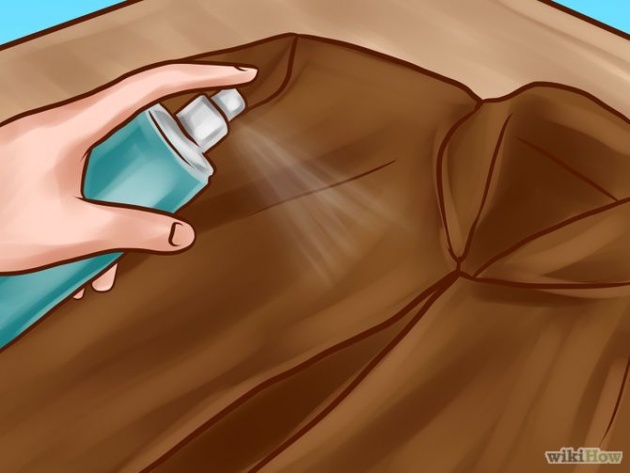
1
Make your leather water resistant. There are many "leather protector" or "leather waterproofing" products, but read the label carefully before buying. A silicone polymer spray, or an acrylic copolymer spray, should preserve your leather's appearance and shine. Grease-based or wax-based products are more protective, but not recommended for jackets due to their potential effect on color, longevity, shine, and smell.[1] Check the label on your product to find out how long the water resistance lasts. Typically, the product needs to be re-applied once every several weeks or months.
- While this treatment will make the leather jacket resistant to water damage, it will not be fully waterproof, even if the treatment claims otherwise. Never immerse a leather jacket in water or place it in a washing machine.
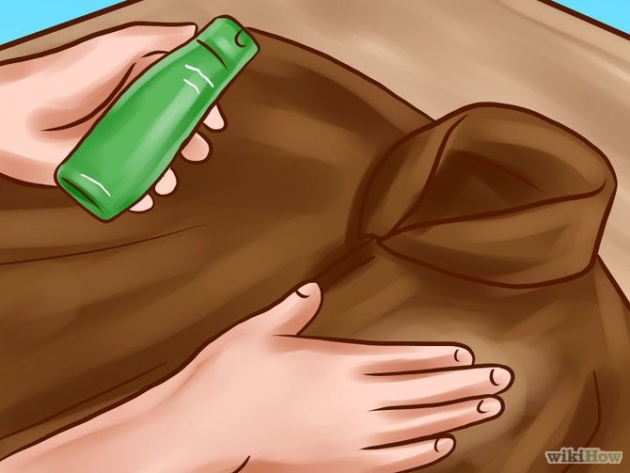 2Apply leather conditioner occasionally. Rubbing in leather conditioner restores oil to the leather, preventing excessive dryness and cracking, but too much oil can clog the pores and affect the jacket's color or longevity. Only apply leather conditioner when the jacket starts to feel dry or stiff. Here are some tips for choosing a product:
2Apply leather conditioner occasionally. Rubbing in leather conditioner restores oil to the leather, preventing excessive dryness and cracking, but too much oil can clog the pores and affect the jacket's color or longevity. Only apply leather conditioner when the jacket starts to feel dry or stiff. Here are some tips for choosing a product:- Check the label to make sure it is suitable for your type of leather. (This is mostly important for suede or nubuck jackets.)
- Ideally, use pure mink oil, neatsfoot oil, or other natural animal oils, but be aware that this may darken the leather.[2][3]
- Products that contain wax or silicone can dry out the leather, but may be a cheaper option that causes less of a color change.[4] Use sparingly.
- Never use products that contain mineral oil or petroleum, which can cause significant damage.[5] Also avoid "saddle soap," at least on unfinished leather without a protective water-resistant coating.[6]
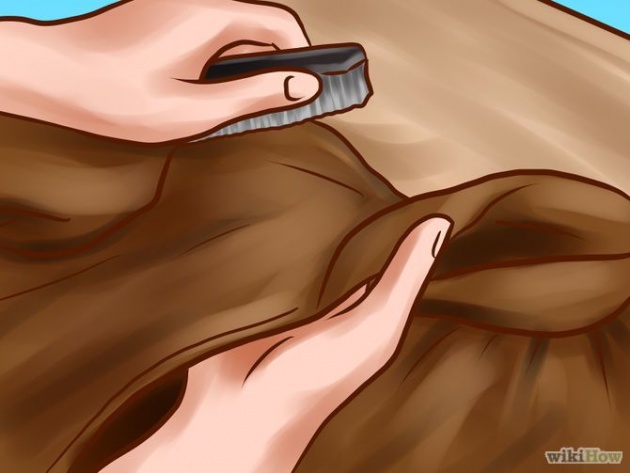
-
3Polish smooth leather jackets on rare occasions. Leather polish will bring a shine to your jacket, but has the potential to discolor, dry out, or clog the leather surface. Use this for special occasions, and test on a hidden area first before using a new product. Buff with a cloth until a glossy surface is created.[7]
- Do not polish suede or other leather with a soft, fuzzy texture. It is not possible to make suede glossy without permanently removing this texture.[8]
- Don't use shoe polish, even if it is intended for leather shoes.
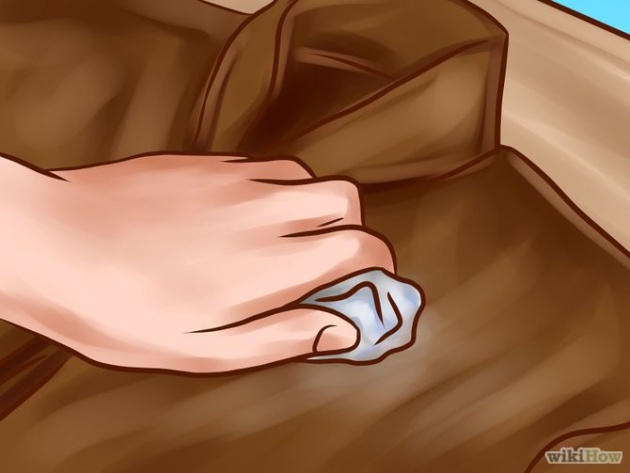
-
4Remove salt deposits with a damp cloth. In damp, winter conditions, white salt deposits can form on leather. Wipe the salt off with a damp cloth promptly, to avoid dry spots and cracks. Let the leather air dry, then apply conditioner to the affected area.[9]
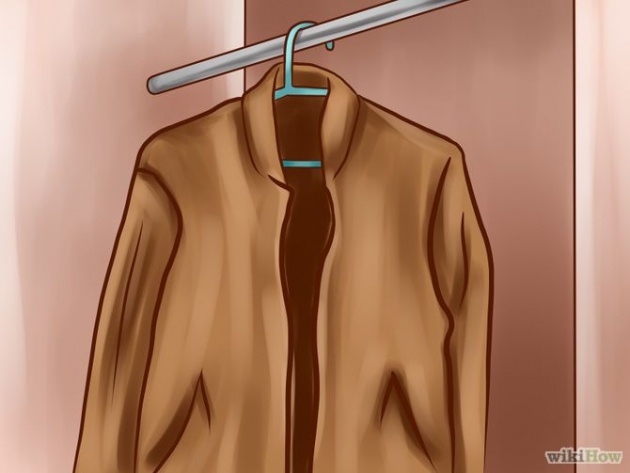 5Let wet leather air dry. If your jacket gets wet, hang it evenly on a hanger to dry at room temperature. Remove objects from the pockets to avoid stretching the wet leather, and keep it away from direct heat sources, such as radiators or airing cupboards. Apply conditioner after drying, if the leather had become thoroughly soaked.
5Let wet leather air dry. If your jacket gets wet, hang it evenly on a hanger to dry at room temperature. Remove objects from the pockets to avoid stretching the wet leather, and keep it away from direct heat sources, such as radiators or airing cupboards. Apply conditioner after drying, if the leather had become thoroughly soaked.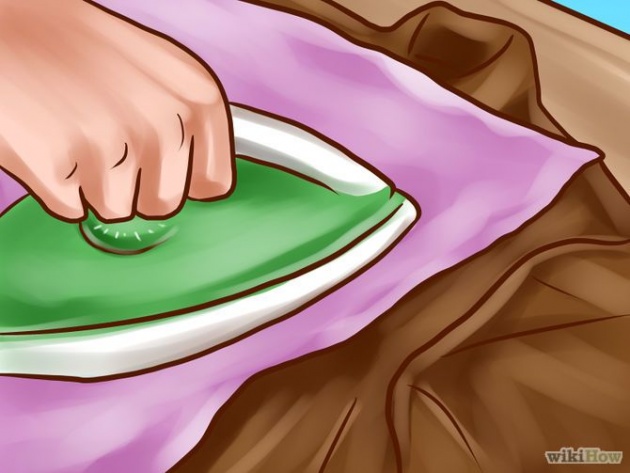 6Learn how to remove wrinkles. Storing the jacket on a clothes hanger should prevent and remove minor wrinkles. If you are bothered by major wrinkles, taking the jacket to a professional leather cleaner is recommended. Alternatively, set a clothes iron to the lowest setting (often labeled "rayon"), place the leather under a cloth, and iron the cloth quickly and briefly.[10]
6Learn how to remove wrinkles. Storing the jacket on a clothes hanger should prevent and remove minor wrinkles. If you are bothered by major wrinkles, taking the jacket to a professional leather cleaner is recommended. Alternatively, set a clothes iron to the lowest setting (often labeled "rayon"), place the leather under a cloth, and iron the cloth quickly and briefly.[10]- See the section on storage for more detailed information.
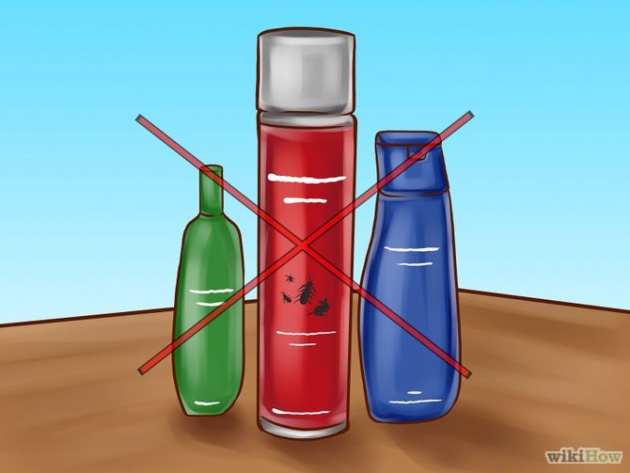 Keep leather away from pesticides. Leather can absorb insecticides. If this occurs, it may not be possible to remove the smell, or even the toxin, from the jacket.[22] In addition, mothballs and similar home pesticides are most effective in small containers, which are not ideal homes for leather.
Keep leather away from pesticides. Leather can absorb insecticides. If this occurs, it may not be possible to remove the smell, or even the toxin, from the jacket.[22] In addition, mothballs and similar home pesticides are most effective in small containers, which are not ideal homes for leather.



